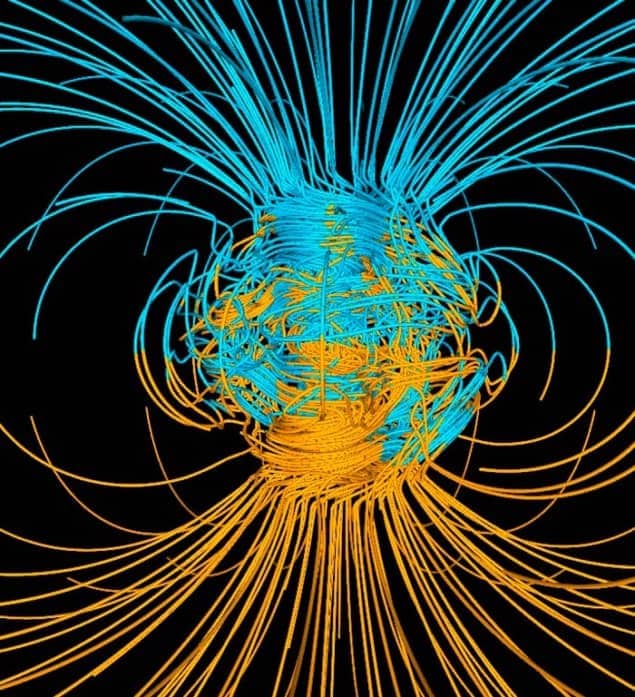
Physicists in France have linked subtle variations in the length of day with conditions in the Earth’s core – where the Earth’s magnetic field originates. The finding could improve our poor understanding of how the field is generated and why it changes in response to conditions deep within the Earth’s interior.
Molten iron flowing in the outer core generates the Earth’s geodynamo, leading to a planetary-scale magnetic field. Beyond this, though, geophysicists know very little for certain about the field, such as its strength in the core or why its orientation fluctuates regularly. Researchers do suspect, however, that field variations are strongly linked with changing conditions within the molten core.
As we cannot access the Earth’s core directly, researchers look to clues at the Earth’s surface. One intriguing suggestion is that changing conditions at the core could have an impact on angular momentum throughout the whole Earth system. The implication is that variation to the flow patterns in the core could have an impact on the Earth’s rotation, which could lead to slight variations in the length of a day.
New wave
Nicolas Gillet and colleagues at the Université Joseph Fourier claim to have the strongest evidence yet that this is indeed happening. By reconstructing flow within the Earth’s core using an established model of the geodynamo, the researchers see a type of wave – called an Alfven wave – emerge from within the core. They believe that this wave, not seen before in simulations, is transferring angular momentum through the core towards the overlying mantle.
Closer inspection of the simulations revealed that these Alfven waves are dragged by the magnetic field and they recur just once every six years. The key result is that this periodicity corresponds with a six-year signal in the variation to the length of day, leading the researchers to link the two phenomena. They argue that the Alfven waves play a role in balancing angular momentum throughout the Earth. “When the core rotates faster, the rotation of the mantle must be slower in order to compensate, which in turn increases the length of day,” explains Nicolas Gillet.
Having established this link, Gillet’s team focused their attention on the Alfven wave as it propagates through the core. Realizing that the wave takes approximately four years to reach the mantle, they were able to calculate the strength of the Earth’s magnetic field within the core – approximately 4 mT. This value is the most reliable yet for the magnetic field in the core, claim the researchers.
Good value
Ulrich Christensen, a geophysicist at the Max Planck Institute for Solar System Research is impressed by the unified approach taken by Gillet’s team. “I like the value derived from this analysis as it is in line with what I would expect from the recent geodynamo simulations,” he says.
Previous estimates of the magnetic field within the core had come directly from numerical simulations, or from interpreting geomagnetic data gathered at the surface. “Our study revisits the estimate from geophysical data, and reconciles it with geodynamo simulations,” says Gillet.
And the full significance of this research may not be realized yet. The researchers believe that they can go on to develop a more complete model of the geodynamo and the way angular momentum is transferred through the core. “It is important in order to understand how the geodynamo works and how this is linked with the thermal history of the planet,” says Gillet.
This research is published in Nature.



